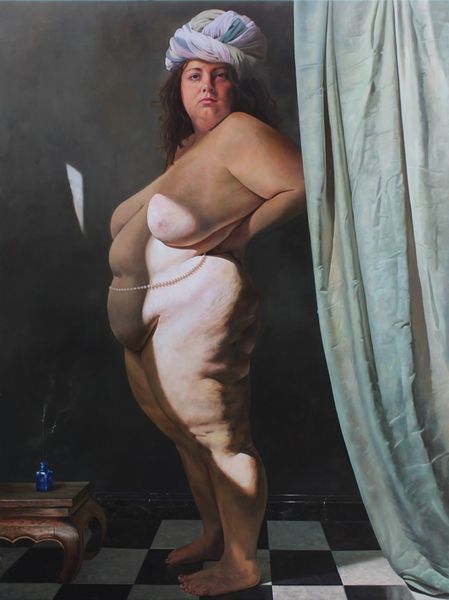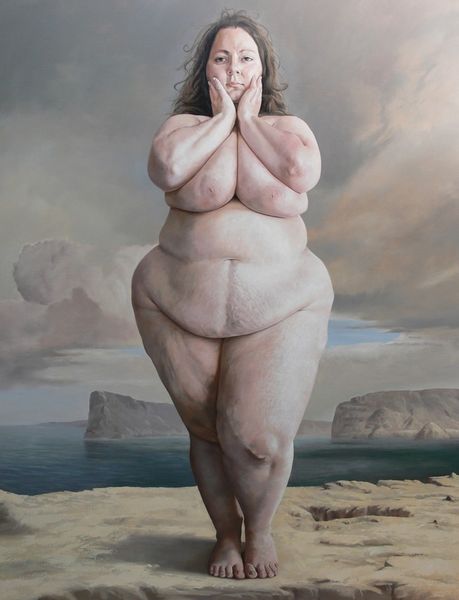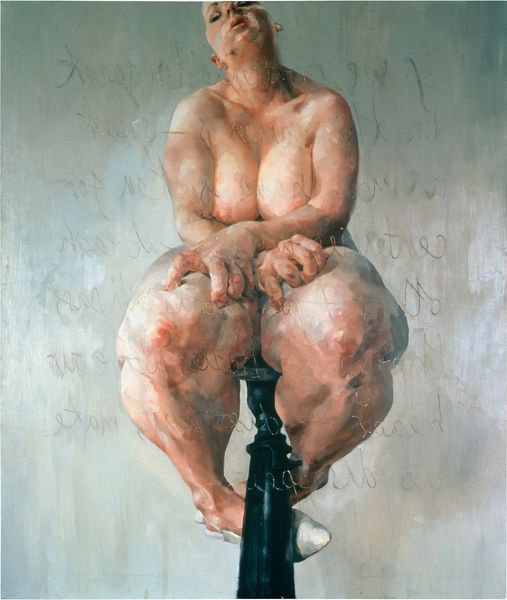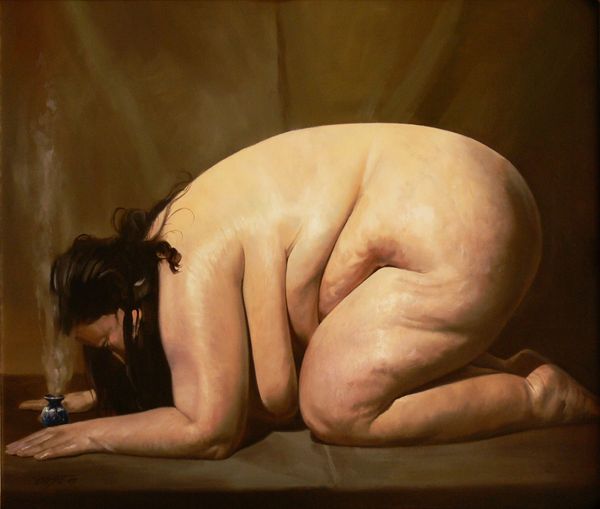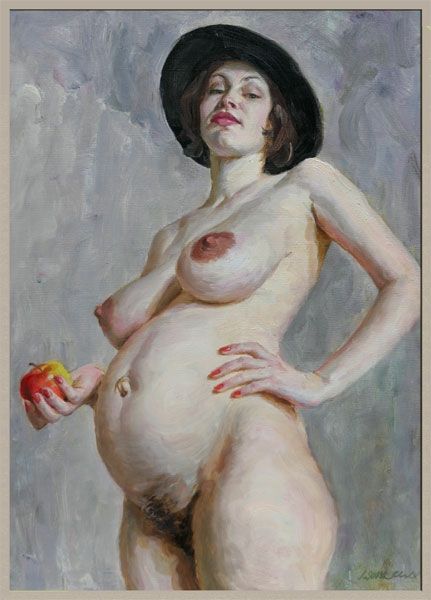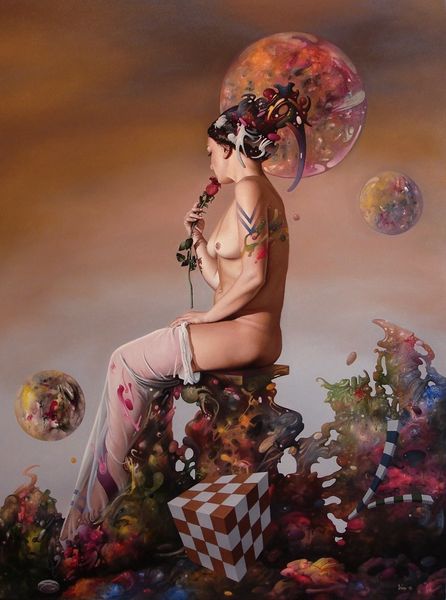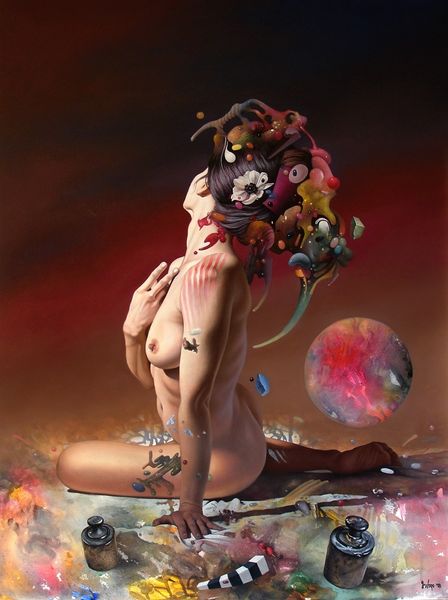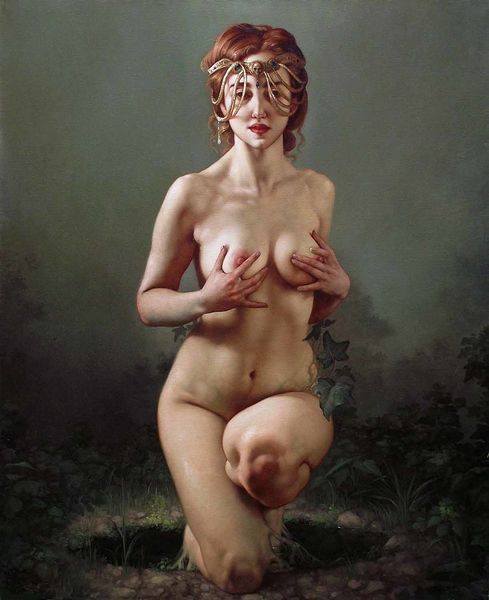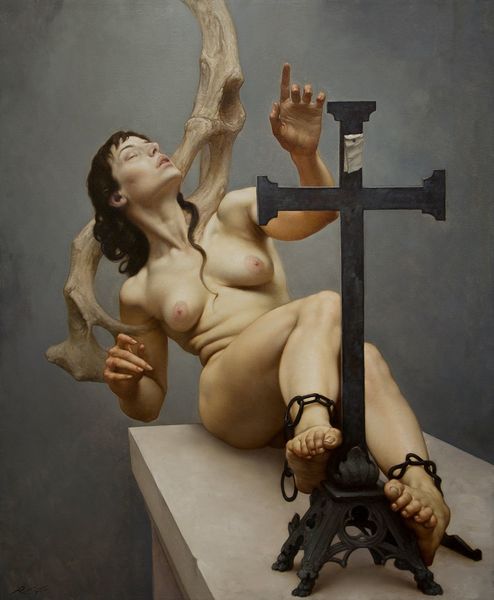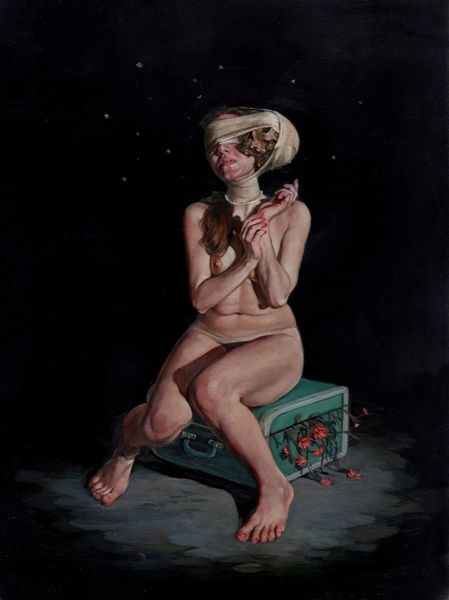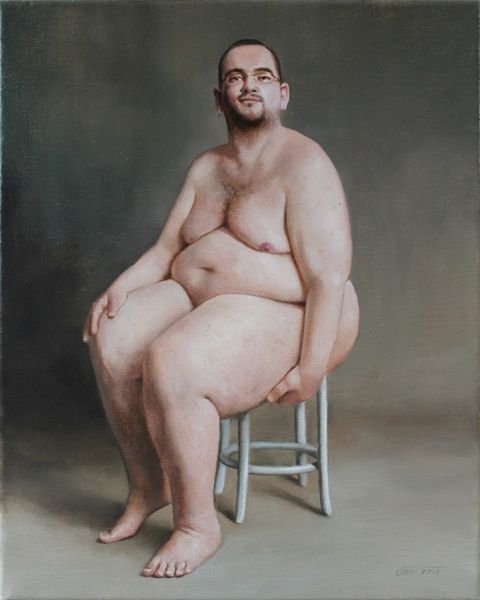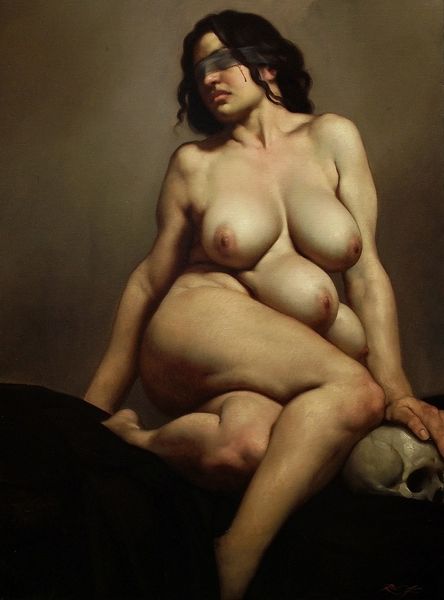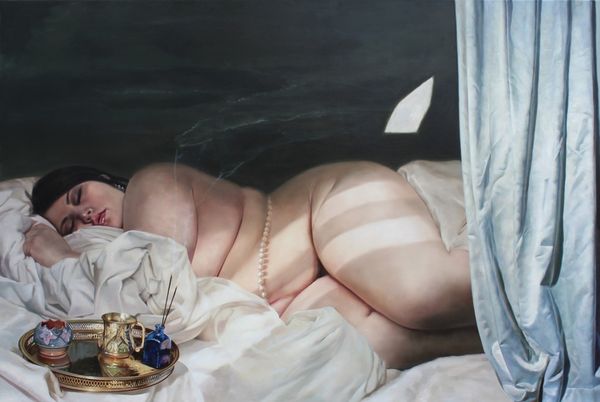
painting, oil-paint
#
contemporary
#
painting
#
oil-paint
#
figuration
#
body-art
#
neo expressionist
#
neo-expressionism
#
history-painting
#
nude
#
erotic-art
#
realism
Dimensions: 250 x 150 cm
Copyright: Rolf Ohst,Fair Use
Editor: This is "Vater Unser" by Rolf Ohst, created in 2016. It’s an oil painting depicting a nude figure on a cross. It definitely plays with familiar imagery but in a really unexpected way. What can you tell me about it? Curator: It’s fascinating how Ohst re-stages a potent symbol of suffering and redemption using a female body that challenges conventional beauty standards. Consider the labor involved in its creation – the physical act of painting such a large canvas, the sourcing and mixing of the oil paints themselves. The materiality screams of the artist's intention to redefine how we consume images of the body. Do you think this piece encourages reflection on body image and its relationship to the materials we use? Editor: I think so, definitely! It makes you think about the materials that contribute to societal views on beauty. How the tools used both make and sometimes break down our views. Curator: Exactly. And beyond the materials themselves, there's the act of representation. Think about the history of crucifixion scenes in art, typically portraying a male figure. Ohst challenges that established imagery, re-framing a narrative of sacrifice and exploring what that means when projected onto a female form. The use of oil paint – a medium steeped in art historical tradition – amplifies that conversation. Editor: So it’s less about the divine and more about earthly concerns and physical reality. It seems like it inverts classic historical painting with a contemporary perspective. Curator: Precisely. It compels us to consider what and whom we valorize. Who does society 'crucify,' and what are the tools - the materials, the industries, the beauty standards - used in that process? It isn’t just challenging religion; it is challenging consumerism of the human body and societal obsession with certain forms of representation. Editor: I never considered the relationship between materials, labor and consumption in figurative art like that before. It is not just about what we see, but what goes into producing the work. Curator: Indeed. By paying attention to process and materiality, we gain a new appreciation and critical understanding.
Comments
No comments
Be the first to comment and join the conversation on the ultimate creative platform.
